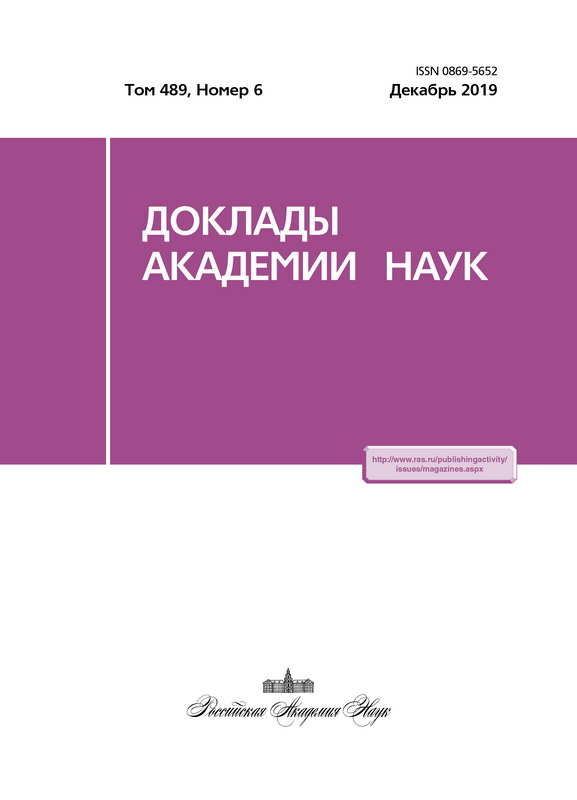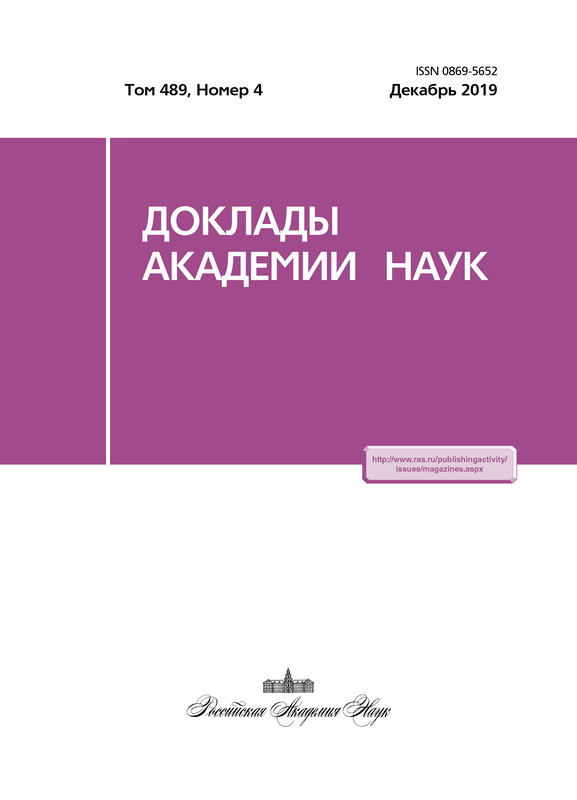Магнификамид - новый эффективный ингибитор a-амилаз млекопитающих
- Авторы: Синцова О.В.1, Лейченко Е.В.1, Гладких И.Н.1, Калиновский А.П.1,2, Монастырная М.М.1, Козловская Э.П.1
-
Учреждения:
- Тихоокеанский институт биоорганической химии имени Г.Б. Елякова Дальневосточного отделения Российской академии наук
- Дальневосточный федеральный университет
- Выпуск: Том 489, № 4 (2019)
- Страницы: 429-432
- Раздел: Биохимия, биофизика, молекулярная биология
- URL: https://journals.eco-vector.com/0869-5652/article/view/18703
- DOI: https://doi.org/10.31857/S0869-56524894429-432
- ID: 18703
Цитировать
Аннотация
Получен рекомбинантный аналог пептида морской анемоны Heteractis magnifica, и изучены кинетические характеристики его взаимодействия с α-амилазами млекопитающих. Магнификамид значительно эффективнее ингибирует α-амилазы, чем лекарственный препарат акарбоза (PrecoseTM или GlucobayTM). Предполагается, что магнификамид может найти применение в качестве средства для предупреждения развития метаболического синдрома, коррекции нарушений обмена веществ и лечения сахарного диабета второго типа.
Ключевые слова
Об авторах
О. В. Синцова
Тихоокеанский институт биоорганической химии имени Г.Б. Елякова Дальневосточного отделения Российской академии наук
Автор, ответственный за переписку.
Email: sintsova0@gmail.com
Россия, 690022, г. Владивосток, пр-т 100-лет Владивостоку, 159
Е. В. Лейченко
Тихоокеанский институт биоорганической химии имени Г.Б. Елякова Дальневосточного отделения Российской академии наук
Email: sintsova0@gmail.com
Россия, 690022, г. Владивосток, пр-т 100-лет Владивостоку, 159
И. Н. Гладких
Тихоокеанский институт биоорганической химии имени Г.Б. Елякова Дальневосточного отделения Российской академии наук
Email: sintsova0@gmail.com
Россия, 690022, г. Владивосток, пр-т 100-лет Владивостоку, 159
А. П. Калиновский
Тихоокеанский институт биоорганической химии имени Г.Б. Елякова Дальневосточного отделения Российской академии наук; Дальневосточный федеральный университет
Email: sintsova0@gmail.com
Россия, 690022, г. Владивосток, пр-т 100-лет Владивостоку, 159;
690950, г. Владивосток, ул. Суханова, 8
М. М. Монастырная
Тихоокеанский институт биоорганической химии имени Г.Б. Елякова Дальневосточного отделения Российской академии наук
Email: sintsova0@gmail.com
Россия, 690022, г. Владивосток, пр-т 100-лет Владивостоку, 159
Э. П. Козловская
Тихоокеанский институт биоорганической химии имени Г.Б. Елякова Дальневосточного отделения Российской академии наук
Email: sintsova0@gmail.com
Россия, 690022, г. Владивосток, пр-т 100-лет Владивостоку, 159
Список литературы
- Alam U., Asghar O., Azmi S. // Handbook. Clin. Neurol. 2014. V. 126. P. 211-222.
- Pandey A., Chawla S., Guchhait P. // IUBMB Life. 2015. V. 67. P. 506-513.
- Aye T., Levitsky L.L. // Curr. Opin. Pediatr. 2003. V. 15. P. 411-415.
- Temneanun O.R., Trandafir L.M., Purcarea M.R. // J. Med. Life. 2016. V. 9. P. 235-239.
- Scheen A.J. // Drugs. 2003. V. 63. P. 933-951.
- Chiasson J.-L., Josse R.G., Gomis R., et al. // Lancet. 2002. V. 359. P. 2072-2077.
- Wu H., Liu J., Lou Q., et al. // Medicine (Baltimore). 2017. V. 96. P. 7533.
- Fosgerau K., Hoffmann T. // Drug Discov. Today. 2015. V. 20. P. 122-128.
- Sintsova O., Gladkikh I., Chausova V., et al. // J. Proteomics. 2018. V. 173. P. 12-21.
- Sintsova O.V., Monastyrnaya M.M., Pislyagin E.A., et al. // Russ. J. Bioorganic Chem. 2015. V. 41. P. 590-596.
- Monastyrnaya M., Peigneur S., Zelepuga E., et al. // Mar. Drugs. 2016. V. 14. P. 229.
- Morrison J.F. // Biochim. Biophys. Acta-Enzymol. 1969. V. 185. P. 269-286.
- Yoon S.H., Robyt J.F. // Carbohydr. Res. 2003. V. 338. P. 1969-1980.
Дополнительные файлы







